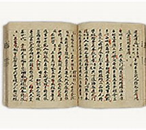Heiankyo first encountered an infectious disease a thousand years ago

On the New Year in Daido 3 (808), more than 10 years after the relocation of Heian-kyo, the streets of Kyoto seem to have been filled with dead bodys. The Imperial Court is believed to have sent a Corpse Processor to bury the abandoned carcass in Kyoto with a strong infection.
The floods that hit countries two years ago this year also affected the capital of Kyoto and seemed to have spread plague. Ten years later, in 818, KOUNIN 9 (818), a famine occurred, and hunger and plague struck Heiankyo. At this time, the dead seemed to overflow in the town of Kyoto. The population has been halved.
At the beginning of Heian-era, this capital was run largely influenced by the neighboring area, as much of the daily necessities owed to the around area as a consuming city. Except for Kyoto’s unique handicraft products, most of the food such as rice was provided as tribute, so they had to be affected by the weather.
There is such an episode in the literature. According to the book “Honchouseiki” and “Nihonkiryaku”, “Many people are dead on the streets, the coming and going people pinch their nose, birds and dogs get tired for eating, and their skeletons block in the streets.
They pray that the plague will subside in Kyoto’s alleys and street, and when it is spread that the muddy water of a small well in Sanjo Aburano Koji is effective in repelling plague, it was said that everybody held a pail and rush to drink muddy water.
It is said that during the Heian period, the plague was believed to be caused by the demon of the Onigata, so the Imperial Court held the Kiki-Festival and prayed for its recover. We, in the 21st century, just want the coronavirus to converge as soon as possible.
Human psychology is something that has not changed from 1000 years ago. The recent mask buying and toilet paper shortages have similar defensive responses.
The end of document
